 by our College Data Analytics Team
by our College Data Analytics TeamClark total enrollment is approximately 3,405 students. 2,185 are undergraduates and 970 are graduate students.
Male/Female Breakdown of Undergraduates
The full-time Clark undergraduate population is made up of 62% women, and 38% men.

For the gender breakdown for all students, go here.
Clark Racial/Ethnic Breakdown of Undergraduates
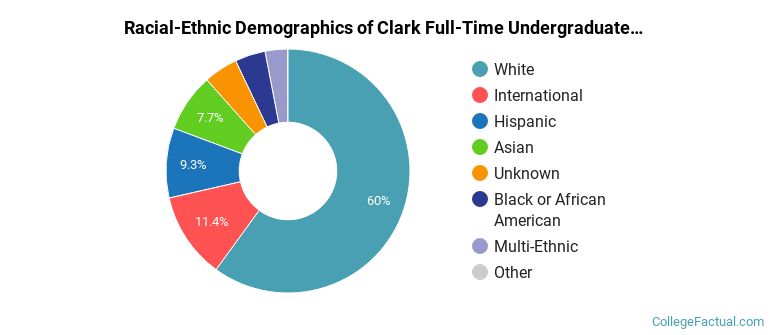
| Race/Ethnicity | Number |
|---|---|
| White | 1,340 |
| International | 212 |
| Hispanic | 211 |
| Asian | 155 |
| Black or African American | 105 |
| Unknown | 90 |
| Multi-Ethnic | 70 |
| Native Hawaiian or Pacific Islander | 1 |
See racial/ethnic breakdown for all students.
Male/Female Breakdown of Graduate Students
About 52% of full-time grad students are women, and 48% men.
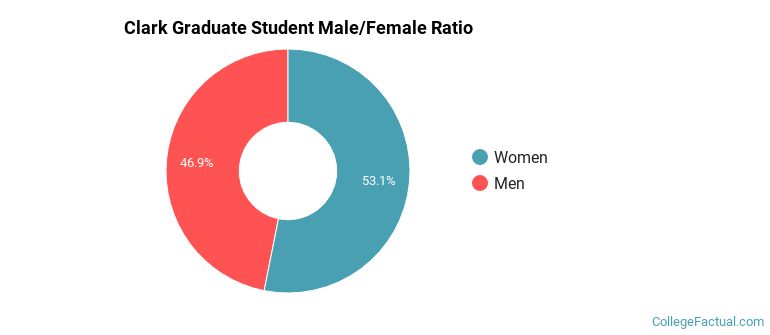
For the gender breakdown for all students, go here.
Clark Racial-Ethnic Breakdown of Graduate Students
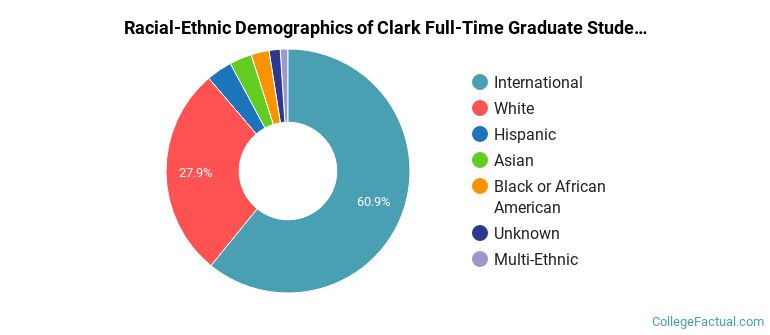
| Race/Ethnicity | Number |
|---|---|
| International | 631 |
| White | 247 |
| Hispanic | 24 |
| Black or African American | 22 |
| Asian | 20 |
| Unknown | 15 |
| Multi-Ethnic | 11 |
| Native Hawaiian or Pacific Islander | 0 |
See racial/ethnic breakdown for all students.
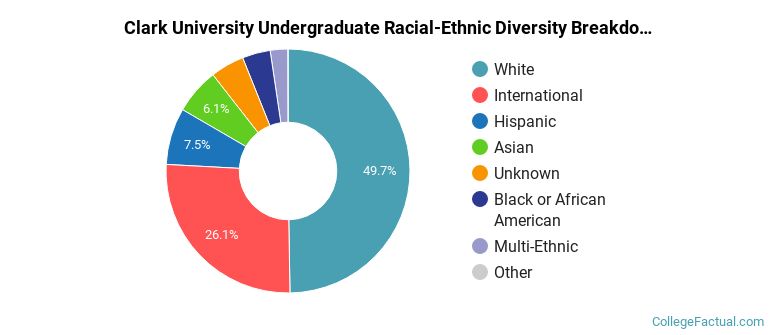
| Race/Ethnicity | Number |
|---|---|
| White | 1,721 |
| International | 892 |
| Hispanic | 250 |
| Asian | 183 |
| Black or African American | 146 |
| Unknown | 125 |
| Multi-Ethnic | 86 |
| Native Hawaiian or Pacific Islander | 1 |

There are approximately 2,008 female students and 1,397 male students at Clark.
Clark ranks 290 out of 2,183 when it comes to geographic diversity.
60.92% of Clark students come from out of state, and 12.96% come from out of the country.

The undergraduate student body is split among 27 states (may include Washington D.C.). Click on the map for more detail.
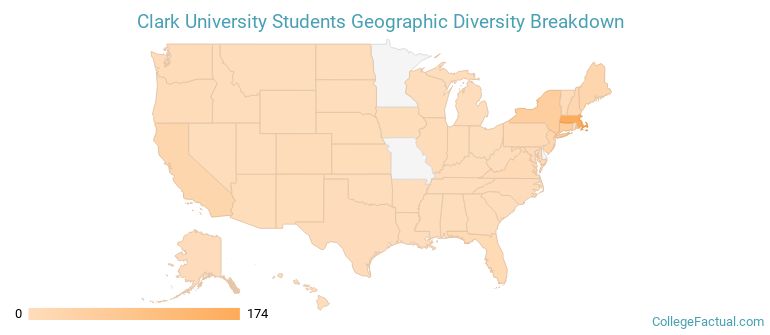
| State | Amount |
|---|---|
| Massachusetts | 174 |
| Connecticut | 53 |
| New York | 52 |
| California | 24 |
| Maine | 24 |
Students from 94 countries are represented at this school, with the majority of the international students coming from China, India, and Vietnam.
Learn more about international students at Clark.
A traditional college student is defined as being between the ages of 18-21. At Clark, 64.45% of students fall into that category, compared to the national average of 60%.
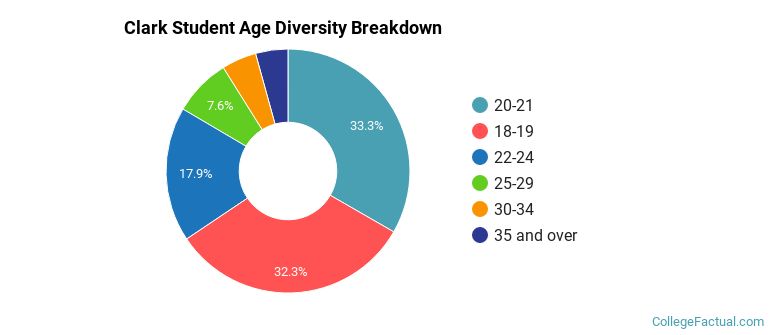
| Student Age Group | Amount |
|---|---|
| 20-21 | 1,032 |
| 18-19 | 1,000 |
| 22-24 | 554 |
| 25-29 | 236 |
| 30-34 | 143 |
| 35 and over | 133 |
| Under 18 | 0 |
Footnotes
*The racial-ethnic minorities count is calculated by taking the total number of students and subtracting white students, international students, and students whose race/ethnicity was unknown. This number is then divided by the total number of students at the school to obtain the racial-ethnic minorities percentage.
References
Department of Homeland Security Citizenship and Immigration Services
Find out how College Factual created their Diversity Rankings.